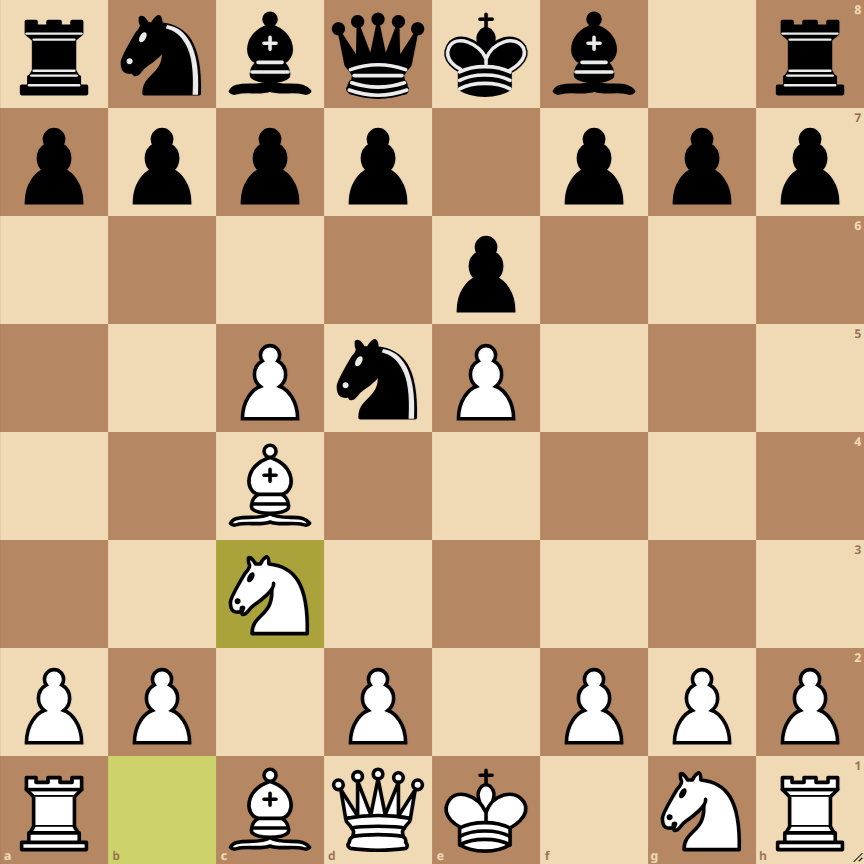How to Play the Alekhine Defense Opening: Hunt Variation – Lasker Simul Gambit
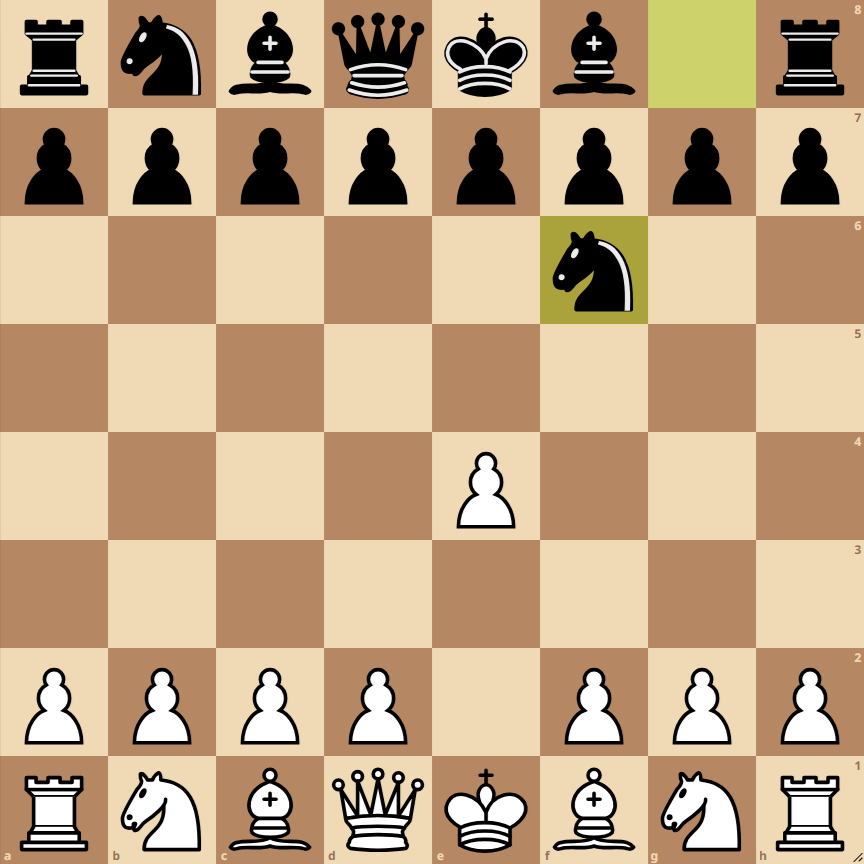
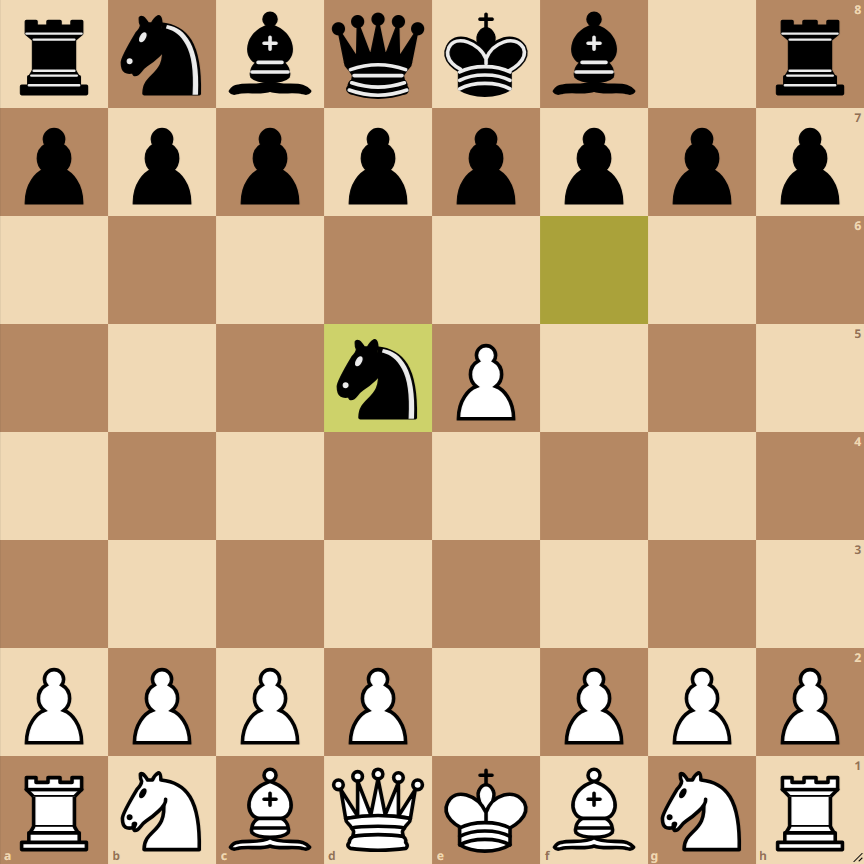

- 1. e4: White opens with the king’s pawn, controlling the center and preparing the development of their pieces.
- 1… Nf6: Black responds with the Alekhine Defense, inviting White to advance their central pawn.
- 2. e5: White advances their pawn, attacking the knight and gaining space in the center.
- 2… Nd5: The knight retreats to a safer position, maintaining pressure in the center.
- 3. c4: White seeks to control more space and displace the knight from its central position.
- 3… Nc6: The black knight retreats but maintains its influence in the center.
- 4. c5: Aggressive pawn advance, aiming to gain more space and limit the options of the black knight.
- 4… Nd5: The knight returns to its previous position, challenging White’s control.
- 5. Nc3: Development of the knight, controlling the center and supporting the pawn on e5.
Variations of the Alekhine Defense Opening: Hunt Variation – Lasker Simul Gambit
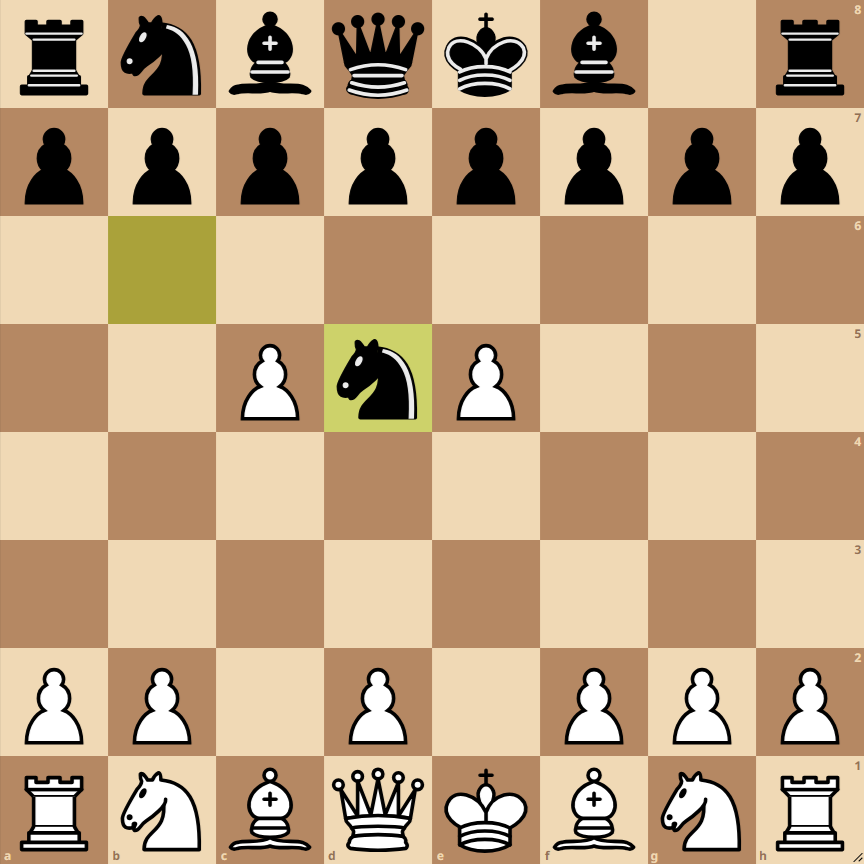
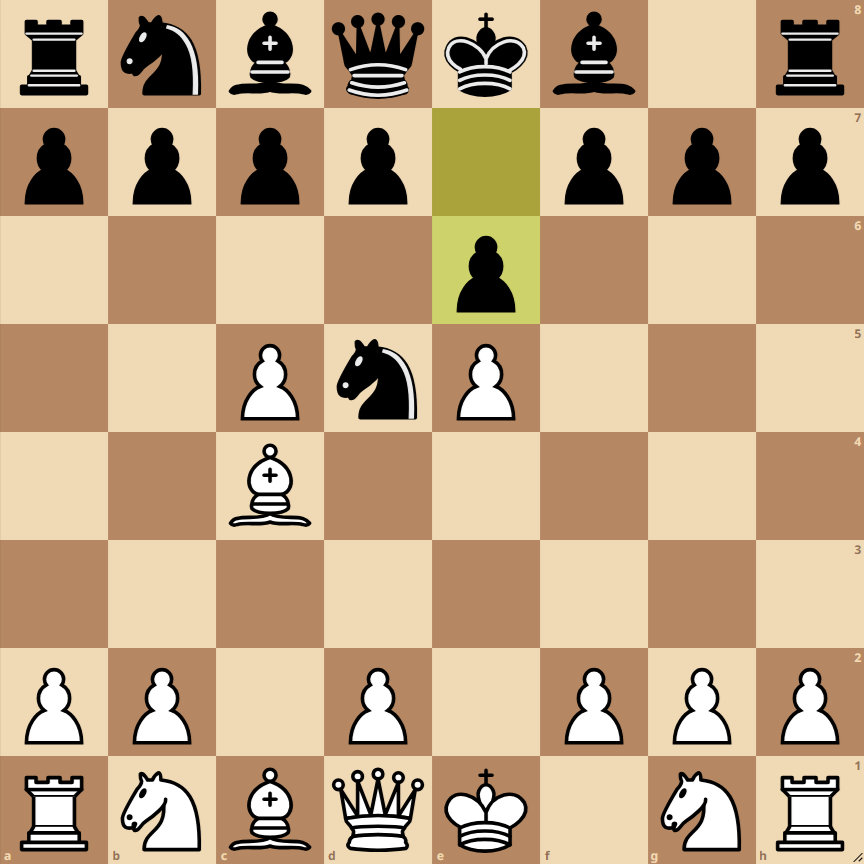
3… d6
This variation aims to immediately break the center of White and free the bishop on dark squares.
4… dxc5
Black captures the pawn on c5, challenging White’s central pawn structure and opening lines for their pieces.
5… c6
A move that reinforces the knight’s position on d5 and prepares a possible d6-d5 advance to counter the White center.
Opening Analysis: Alekhine Defense, Hunt Variation, Lasker Simul Gambit
The Alekhine Defense, an unconventional yet potent opening, is characterized by the initial move 1… Nf6, challenging White to occupy the center. In this specific variation, the Hunt Variation of the Lasker Simul Gambit, resulting positions are dynamic and rich in tactical opportunities.
Current Position
After 6. Nc3, we find ourselves at a critical point in the opening. White has achieved solid control of the center with pawns on e5 and c5, while Black has developed their knight and bishop, preparing to challenge the White central structure.
Strategies and Tactics for White:
- Center Dominance: White has advanced pawns in the center, granting them space and potential for launching attacks.
- Development and Castling Preparation: The bishop on c4 is well-placed, and White should consider castling kingside to ensure the safety of their king.
- Aggressive Play: With the pawn on c5, White has the opportunity to displace the Black knight and further weaken the Black pawn structure.
Strategies and Tactics for Black:
- Counterattack in the Center: Black should seek opportunities to counterattack in the center, possibly advancing their d or f pawn.
- Development of Minor Pieces: Black needs to develop their dark-squared bishop and consider where to place their queen and rooks for maximum effectiveness.
- Exploiting White’s Overextension: If White overextends, Black can look for tactical opportunities, especially against the pawn on c5.
Next Best Moves
Each of these moves carries its own risks and opportunities, and the choice depends on the player’s style and long-term strategy as Black. The Alekhine Defense is known for its ability to unbalance White and lead to dynamic and complex games.

